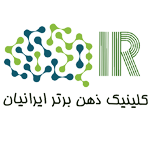پروتکل درمانی rTMS در معالجه افسردگی
روز بروز برتعداد مطالعاتی که راجع به اثر بخشی rTMS در بیماریهای مختلف به چاپ رسیده بیشتر می شود . بنا براین تحقیقات روز افزون روش درمان با rTMS در بعضی از بیماریها مانند افسردگی بعنوان درمان اصلی و در بعضی دیگر از بیماریها در مان کمکی به حساب می آید. ترکیب درمان با rTMS با درمان های توان بخشی در بعضی از بیماری ها نظیر سکته های مغزی خیلی کمک کننده است و اثر درمانی را چندین برابر می کند.
درمان با این وسیله باعث افزایش پلاستیسیتی در مغز می شود.
درحال حاضر rTMS یک روش درمانی موثر در درمان بیماری افسردگی است ، که این روش درمان توسط سازمان FDA آمریکا و اگثر کشورهای اروپائی مورد تایید قرار گرفته.
اگر ناحیه خلفی طرفی قطب لوب فرونتال چپ را با امواج تحریکی با فرکانس 10 تحریک کنیم ، مشاهده شده که بهبودی خوبی در میزان افسردگی در مقایسه با گروه پلاسبو حاصل شده . میزان پاسخ به درمان در بیماران جوان تر و یا بیمارانی که اخیرا دچار افسردگی شده اند بیشتر است . در زیر قسمتی از صفحه 398 چاپ هفتم کتاب مرجع برادلی تقدیم شده.
دکتر داود آذرنگی متخصص مغز واعصاب
پلی کلینیک ذهن برتر ایرانیان شهریور 96
Current Concepts of Therapeutic Application of rTMS
A rapidly growing number of randomized controlled studies have probed the therapeutic potential of rTMS in various brain disorders. Therapeutic applications include rTMS as an adjunct to conventional therapy, in treatment-refractory cases, and as a first line therapy. rTMS promotes learning during repetitive practice (Ackerley et al., 2010), and combining rTMS with rehabilitative and other types of interventions may enhance the therapeutic benefit. The rationale of rTMS is to promote plasticity. rTMS may offer an alternative to invasive procedures including DBS and epidural cortex stimulation, and may simulate the condition after electrode implantation to determine the eligibility of candidates in a pre-surgical evaluation and contribute to validating a cortical target. rTMS probes plasticity and has advanced our knowledge of the pathophysiology of various brain disorders. rTMS could provide a diagnostic test such as in differentiating organic dystonia with altered plasticity in the PAS paradigm from intact plasticity in psychogenic dystonia (Quartarone et al., 2009).
An extensive review of current concepts and guidelines for the potential therapeutic use of rTMS in various brain disorders has been recently published (Lefaucheur et al., 2014). This review focuses on approved applications and discusses selected therapeutic approaches to illustrate the diversity of rationales and possibilities.
Depression
Currently the strongest evidence for rTMS is found for the treatment of depression, and this indication is now clinically approved in the USA and in some countries in Europe (George et al., 2013). A large, multicenter randomized controlled trial (RCT) found significant reduction in depression scores with HF (10 Hz) rTMS to the left dorsolateral prefrontal cortex (DLPFC) compared to placebo in the acute treatment of major depression (O’Reardon et al., 2007). This led to the FDA approval despite a negative multicenter RCT published in the same year (Herwig et al., 2007). There has been a discussion about this discrepancy which some had attributed to the methodological differences. A subsequent RCT supported theantidepressant efficacy of rapid rTMS of the left DLPFC (George et al., 2010), and a current meta-analysis provides further support (Berlim et al., 2013a).
Electroconvulsive therapy provided the initial rationale for rTMS with the intent to modulate brain networks involved in the pathophysiology of depression. The targets had been derived from neurophysiological and imaging research in patients with depression pointing to functionally opposite changes in the prefrontal cortices. This concept of disbalance has found support in therapeutic trials demonstrating similar efficacy of both the approved excitatory rapid rTMS of the left DLPFC and the inhibitory slow rTMS aimed at the hyperactivity of the right DLPFC (Chen et al., 2013). Interestingly, there are nonresponders to either protocol who have benefited from side switching, but no predictor of therapeutic success has been identified which could guide individual therapy. The few controlled studies found no superiority of bilateral over unilateral stimulation of either side (Berlim et al., 2013b).
In conclusion, rapid rTMS of the left DLPFC offers a therapeutic option in medication–refractory major depression. The therapeutic effect increases with repeated interventions and may be stronger in younger patients and depression of recent onset (George et al., 2011).

